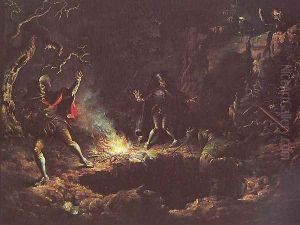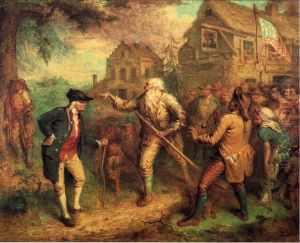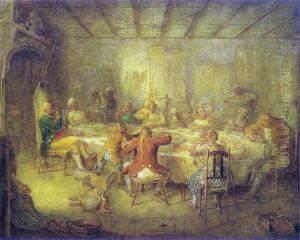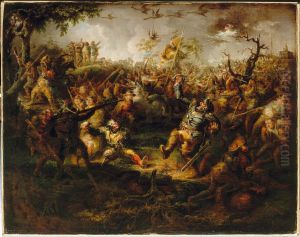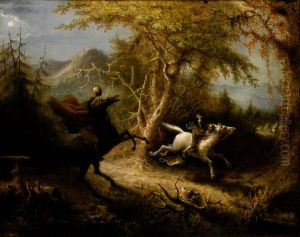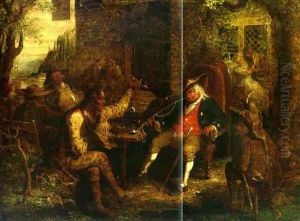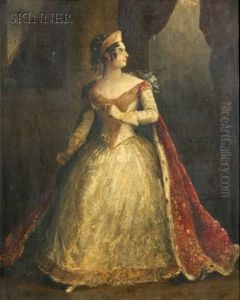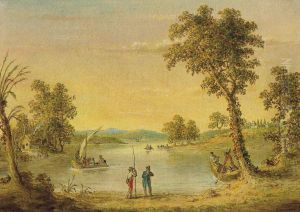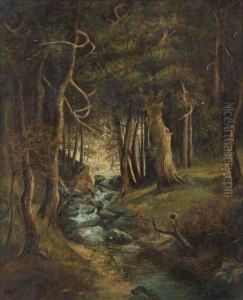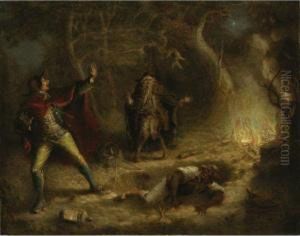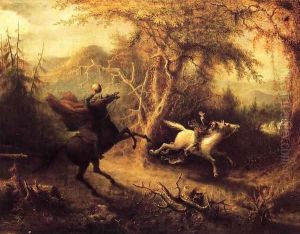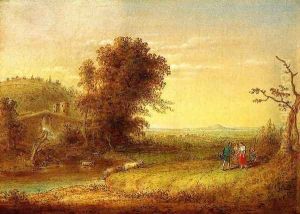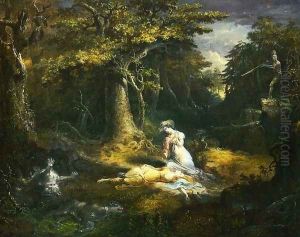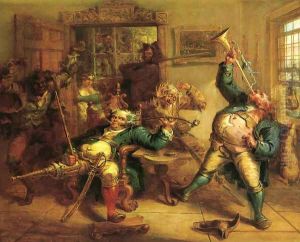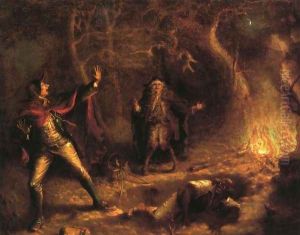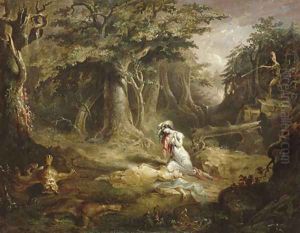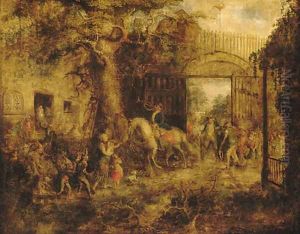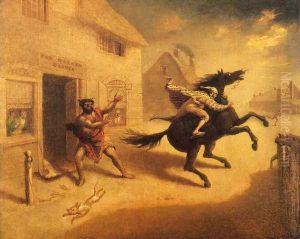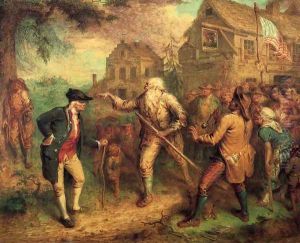John Quidor Paintings
John Quidor was an American painter, known for his unique interpretations of scenes from American literature, particularly those based on the writings of Washington Irving. Born on January 26, 1801, in Tappan, New York, Quidor grew up in a time when the United States was forging its identity, both politically and culturally. This period of American history, often referred to as the Romantic era, was marked by a strong interest in national folklore and the emergence of a distinctly American literary tradition.
Quidor's artistic journey began in earnest when he moved to New York City as a young man. There, he apprenticed with notable portraitist John Wesley Jarvis and was exposed to the burgeoning American art scene. Despite the influence of his mentor, Quidor's own artistic inclinations leaned towards narrative and genre painting rather than portraiture.
Throughout his career, Quidor was particularly fascinated by the stories of Washington Irving, including 'Rip Van Winkle' and 'The Legend of Sleepy Hollow'. His paintings often depicted scenes from these stories, imbuing them with a sense of mystery and the supernatural. Quidor's unique style combined elements of Romanticism with a distinctly American sensibility, capturing the imagination and folklore of the early United States.
Despite his compelling subject matter and unique style, Quidor never achieved significant financial success during his lifetime. He spent many years struggling to sell his paintings and was largely forgotten by the art world by the time of his death on December 13, 1881, in Jersey City, New Jersey. It was not until the 20th century that Quidor's work was rediscovered and appreciated for its contribution to American art and culture. Today, Quidor is recognized as a pioneering figure in American art, whose paintings offer a window into the early American psyche, blending the nation's literature with its artistic heritage.
